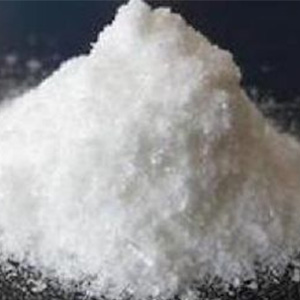
Sodium methylparaben (sodium methyl para-hydroxybenzoate) is a compound with formula Na(CH3(C6H4COO)O). It is the sodium salt of methylparaben. It is a food additive with the E number E219 which is used as a preservative.
Sodium Methyl Hydroxybenzoate BP Grade
Sodium Methylparaben
Sodium Methyl Parahydroxybenzoate, Ph Eur
C8H7NaO3 --- 174.1 --- 5026-62-0
Action and use: Antimicrobial preservative.
DEFINITION
Sodium methyl parahydroxybenzoate contains not less than 99.0 per cent and not more than the equivalent of 102.0 per cent of sodium 4-(methoxycarbonyl)phenolate, calculated with reference to the anhydrous substance.
CHARACTERS
A white or almost white, crystalline powder, freely soluble in water, sparingly soluble in alcohol, practically insoluble in methylene chloride.
IDENTIFICATION
First identification A, B, E.
Second identification A, C, D, E.
A. Dissolve 0.5 g in 50 ml of water. Immediately add 5 ml of hydrochloric acid. Filter and wash the precipitate with water. Dry under vacuum at 80C for 2 h. The precipitate obtained melts at 125C to 128C.
B. Examine the precipitate obtained in identification test A by infrared absorption spectrophotometry, comparing with the spectrum obtained with methyl parahydroxybenzoate CRS.
C. Examine the chromatograms obtained in the test for related substances. The principal spot in the chromatogram obtained with test solution (b) is similar in position and size to the principal spot in the chromatogram obtained with reference solution (c).
D. To about 10 mg in a test-tube add 1 ml of sodium carbonate solution, boil for 30 s and cool. Add 5 ml of aminopyrazolone solution and 1 ml of potassium ferricyanide solution and mix. An orange to red colour develops.
E. To 1 ml of solution S (see Tests) add 1 ml of water. The solution gives reaction (a) of sodium.
TESTS
Solution S: Dissolve 5.0 g in carbon dioxide-free water prepared from distilled water and dilute to 50 ml with the same solvent.
Appearance of solution: Solution S examined immediately after preparation is clear and not more intensely coloured than reference solution.
pH: Dilute 1 ml of solution S to 100 ml with carbon dioxide-free water. The pH of the solution is 9.5 to 10.5.
Related substances: To pass the test.
Chlorides: To 10 ml of solution S, add 30 ml of water and 1 ml of nitric acid and dilute to 50 ml with water. Shake and filter. Dilute 10 ml of the filtrate to 15 ml with water. The solution complies with the limit test for chlorides (350 ppm). Prepare the standard using 14 ml of chloride standard solution (5 ppm Cl) to which 1 ml of water has been added.
Sulphates: To 25 ml of solution S, add 5 ml of distilled water and 10 ml of hydrochloric acid and dilute to 50 ml with distilled water. Shake and filter. Dilute 10 ml of the filtrate to 15 ml with distilled water. The solution complies with the limit test for sulphates (300 ppm).
Heavy metals: 2.0 g complies with limit test C for heavy metals (10 ppm). Prepare the standard using 2 ml of lead standard solution (10 ppm Pb).
Water: Not more than 5.0 per cent, determined on 0.500 g by the semi-micro determination of water.
ASSAY
Dissolve 0.150 g in 50 ml of anhydrous acetic acid. Titrate with 0.1 M perchloric acid, determining the end-point potentiometrically. 1 ml of 0.1 M perchloric acid is equivalent to 17.41 mg of C8H7NaO3.
IMPURITIES
A. R = H: 4-hydroxybenzoic acid,
B. R = CH2-CH3: ethyl 4-hydroxybenzoate,
C. R = CH2-CH2-CH3: propyl 4-hydroxybenzoate,
D. R = CH2-CH2-CH2-CH3: butyl 4-hydroxybenzoate.
Methylparaben Sodium contains not less than 98.5 percent and not more than 101.5 percent of C8H7NaO3, calculated on the anhydrous basis.
Completeness of solution: One g of it, dissolved in water, meets the requirement.